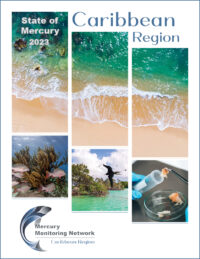Building a Mercury Monitoring Network
A Mercury Monitoring Network is important for helping countries that have ratified (or wish to ratify) the Minamata Convention on Mercury to meet their obligations and effectively implement its provisions.
The development of an integrated network of toxicology laboratories will:
- Help facilitate countries with limited resources to be more efficient in evaluating the effectiveness of the Minamata Convention,
- Provide a way for countries to coordinate information about mercury in seafood for human and ecological health purposes, and to help build capacity within the region to make independent assessments,
- Help assist countries with sustainable economic activities related to seafood resources,
- Provide assistance to build capacity for relevant Ministries to protect human and ecological health.
The Asia-Pacific Mercury Monitoring Network (APMMN)
 BRI is an contributing partner of the Asia-Pacific Mercury Monitoring Network (APMMN). APMMN is a cooperative effort to systematically monitor mercury in air and rainwater throughout the Asia-Pacific Region. The network involves many groups, including environmental ministries and federal government agencies, academic institutions, and scientific research and monitoring organizations. Objectives of APMMN include:
BRI is an contributing partner of the Asia-Pacific Mercury Monitoring Network (APMMN). APMMN is a cooperative effort to systematically monitor mercury in air and rainwater throughout the Asia-Pacific Region. The network involves many groups, including environmental ministries and federal government agencies, academic institutions, and scientific research and monitoring organizations. Objectives of APMMN include:
- Determine the status and trends in atmospheric mercury concentrations as well as wet, dry, and total atmospheric deposition of mercury,
- Provide a robust dataset for regional and global model input.
- Assist partners in developing their mercury monitoring and assessment capacity by providing training on multi-media (e.g., air, precipitation, water, sediment, biota) sampling and analytical methods, and best practices,
- Share data and monitoring information among network partners.
The National Institute for Minamata Disease (NIMD)
 The National Institute for Minamata Disease (NIMD) was founded in the City of Minamata, Kumamoto, in October 1978 to facilitating the advancement of research on Minamata disease, for the purpose of conducting comprehensive medical research in efforts to deliver better medical care for Minamata disease patients.
The National Institute for Minamata Disease (NIMD) was founded in the City of Minamata, Kumamoto, in October 1978 to facilitating the advancement of research on Minamata disease, for the purpose of conducting comprehensive medical research in efforts to deliver better medical care for Minamata disease patients.
After the Minamata Convention on Mercury was adopted and signed in October 2013, NIMD engages, both in Japan and abroad, in disseminating outcomes from research on mercury and lessons learned from Minamata disease, and delivering information, including provision of mercury management technologies, in an attempt to facilitate early entry into force of the Convention. Learn more here.
BRI’s David Evers was the featured speaker for the 2023 NIMD Forum in November 18-19 2023 – Current Status and Challenges of Environmental Mercury Monitoring in the Asia-Pacific and African Regions for Contributing to the Effectiveness Evaluation of the Minamata Convention. This annual forum is aimed at delivering information on the research and other achievements made by the National Institute for Minamata Disease to a broad audience, and also providing a venue for networking and socialization among mercury researchers from Japan and abroad.
NIMD plays a lead role with the Asia-Pacific Mercury Monitoring Network in partnership with the Department of Atmospheric Sciences at the National Central University in Taiwan and the U.S. Environmental Protection Agency International Office and the U.S. National Atmospheric Deposition Program’s Mercury Deposition Network. Other contributing partners include the Japan Ministry of Environment, Japan National Institute of Environmental Studies, IDEA Consultants, Inc., and the Gwangju Institute of Science and Technology in Korea.


Resources and Publications
- Caribbean Mercury Monitoring Network Report
- Mercury in the Global Environment
- Local, Regional, and Global Biomonitoring: Understanding Mercury Exposure through Monitoring At-risk Species
- Global Mercury Monitoring in Biota (8-page summary)
- Phasing Out/Phasing Down Mercury-added Products: What to Know about Consumer and Commercial Products Outlined in the Minamata Convention
Photo Credits: Header photo ©


